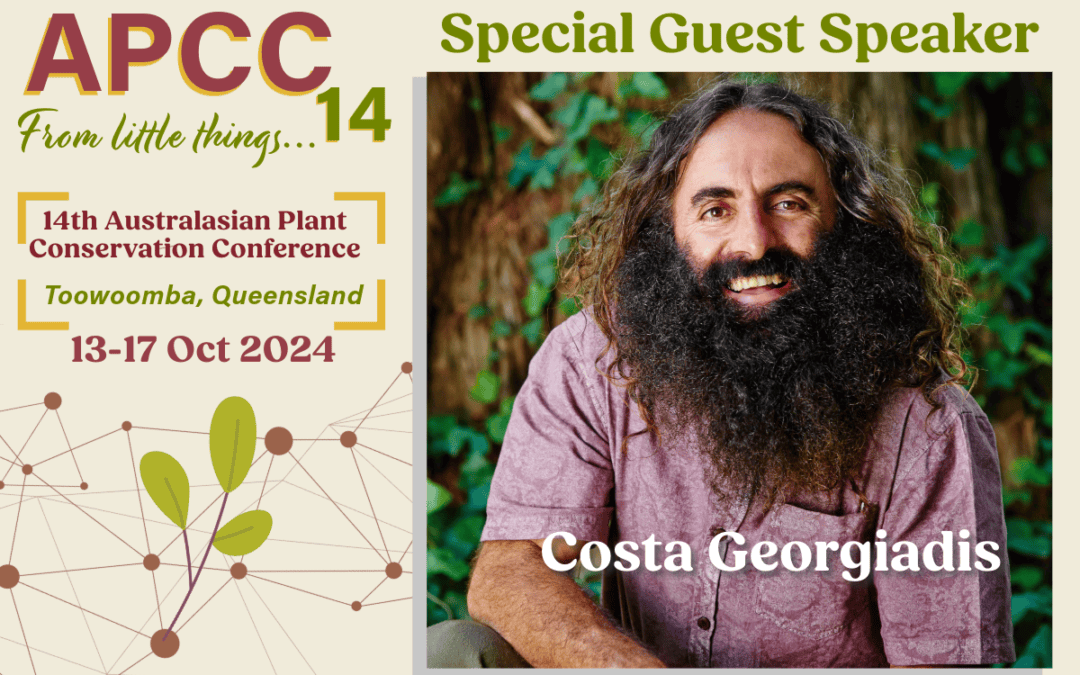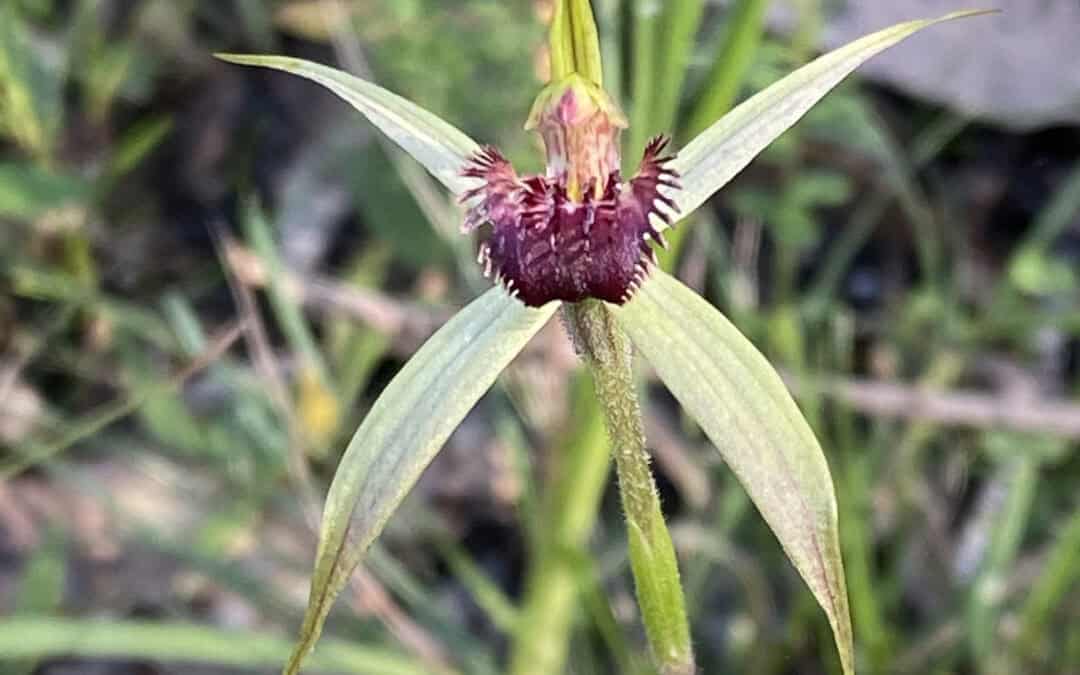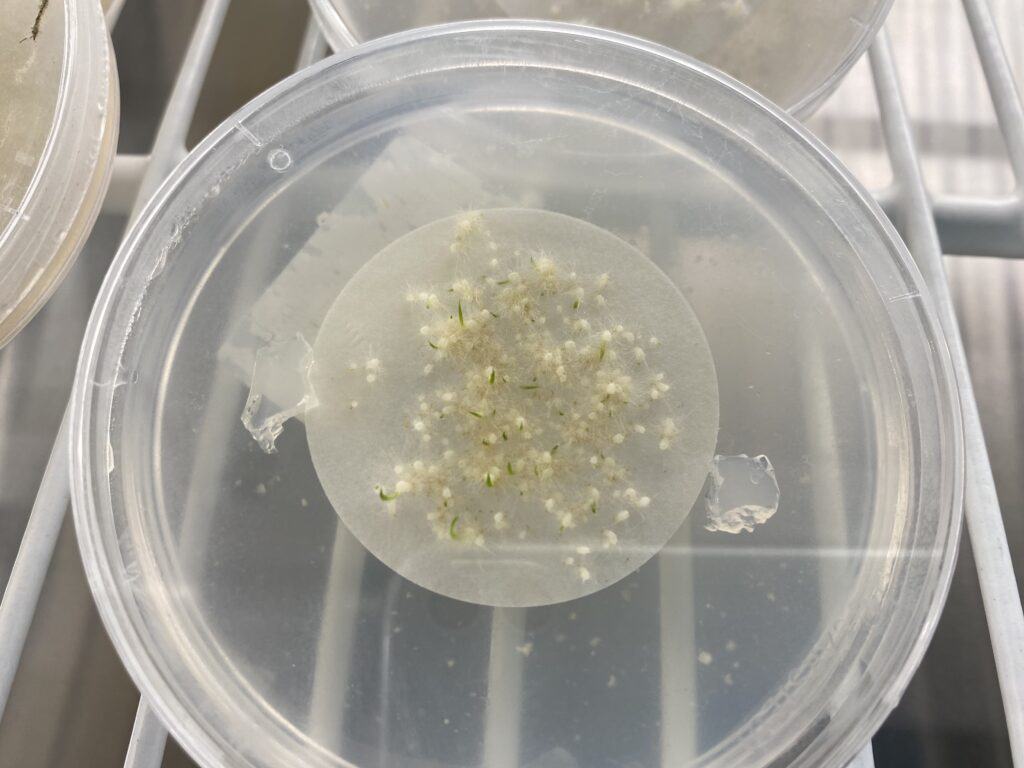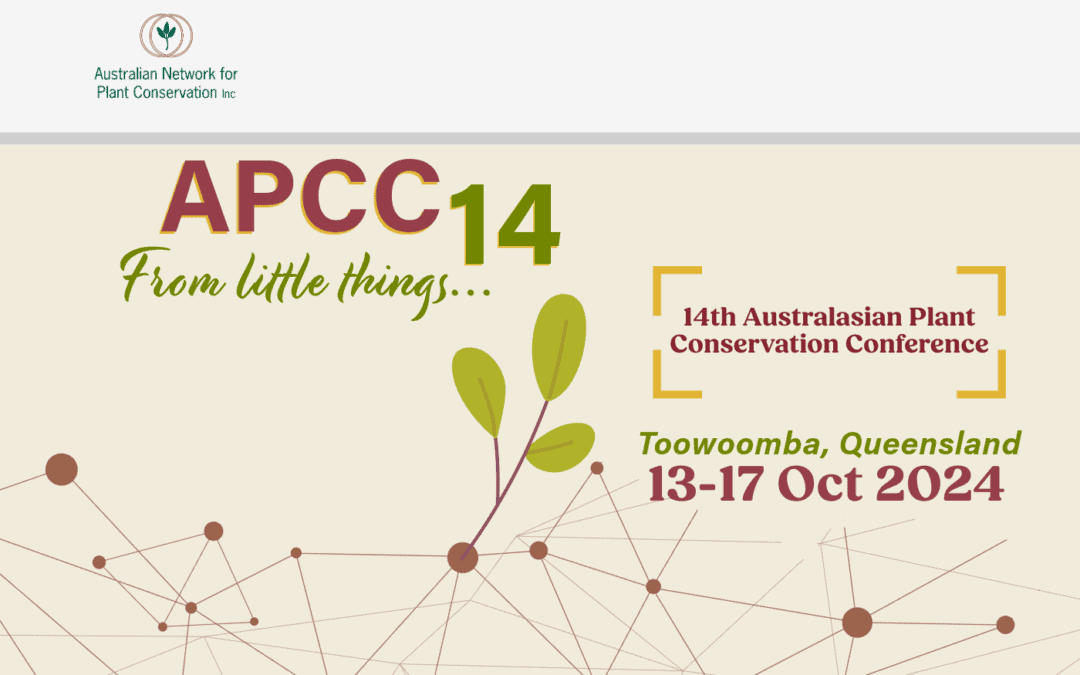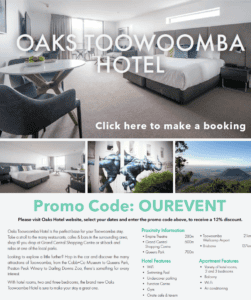
Jul 15, 2024 | Events Category, News
APCC14 Special Guest Speaker announcement!
Costa Georgiadis will be making an appearance at the conference and giving what’s sure to be a very entertaining and illuminating talk on how to get more people interested in native plants and their conservation.
Costa almost needs no introduction. He is a landscape architect, environmental educator, author and has been a presenter of gardening television shows for decades, starting as co-creator and host of Costa’s Garden Odyssey on SBS before becoming a host on ABC’s iconic Gardening Australia program in 2013, continuing to this day.
Beyond the screen, Costa is heavily involved in promoting the importance of biodiversity and preserving habitat, through sustainable gardening and land management. He is a prolific public speaker and an Ambassador for Junior Landcare, sharing his knowledge with a wide variety of audiences. He lives and breathes gardening, relishing the natural world and our connection to it.
You can learn more about the conference and register at the conference webpage: https://www.anpc.asn.au/conferences-apcc14/

Jul 4, 2024 | News
Less than 40 plants of the Critically Endangered Caladenia ancylosa (Genoa spider orchid) remain in two populations in the wild.
Royal Botanic Gardens Victoria (RBGV) scientists have been growing more than 200 seedlings this year from seed collected post the 2020 mega fires. Seed has been grown symbiotically with mycorrhizal fungi which is required for germination.
RBGV and La Trobe University Scientists this Spring will be doing pollinator studies, to locate suitable sites for future translocations and unravel any pollinator sharing that may occur with closely related species. Surveys for this species are planned in East Gippsland this Spring as part of the ‘Preventing the extinction of Victoria’s threatened flora project’ led by Royal Botanic Gardens Victoria.

Caladenia ancylosa seeds – Credit: Noushka Reiter
This research is funded by Department of Energy, Environment and Climate Action‘s Nature Fund.
The ‘Preventing the extinction of Victoria’s threatened flora’ project is led by Royal Botanic Gardens Victoria in partnership with La Trobe University, Australian Network for Plant Conservation, DEECA, Trust for Nature, Wimmera Catchment Management Authority, Nillumbik Shire, ENVITE, Bairnsdale & District Field Naturalists Club, Friends of the Grampians Gariwerd, WAMA Botanic Gardens, Halls Gap Botanic Gardens and the Australasian Native Orchid Society Victorian Branch.
Feature image – Credit: Noushka Reiter

May 10, 2024 | News
QTPN Project Manager Paul Donatiu has provided his first monthly update on how the network is progressing. A summary of the update is:
DESI Threatened Species Operations are currently working with the Stanthorpe Rare Wildflower Consortium to draft Recovery Action Plans (RAP) for Eucalyptus dalveenica and Grevillea scortechinii subsp. scortechinii, two critically endangered species. A multi species RAP which includes 12 plant species for Blacktown Tableland and adjacent state forests has been initiated.
Paul visited Trees for Evelyn and Atherton Tablelands (TREAT) and the QPWS Nursery at Lake Eacham in North Queensland. You can find out more about TREAT at: https://www.treat.net.au/.
In exciting news, we have also welcomed our first 10 member organisations to the network! We would like to thank them for their support.

To learn more about the QTPN, visit: https://www.anpc.asn.au/queensland-threatened-plant-network/
For information on joining the QTPN or other enquires, Paul can be contacted at: qtpn@anpc.asn.au

May 10, 2024 | News
Early bird conference registration and abstract submission for APCC14 are now available here.
Get in before July 26 to take advantage of our early bird pricing!

The conference will be held in Toowoomba, Queensland, from 13-17 October 2024 at the Oaks Toowoomba Hotel. Receive a 12% discount to stay at the Oaks! Just book via the Hotel’s website and enter the promo code OUREVENT.

Partner with us to make the conference even better! You can view our Partnership Prospectus here (pdf link). At the moment we are particularly looking for Bursary funding to support students and Traditional Owners to attend. The conference also provides an excellent opportunity to promote the profile of your organisation, including your involvement in plant conservation, to attendees from across Australia.

For more information about the conference, visit https://www.anpc.asn.au/conferences-apcc14/

Mar 4, 2024 | News
Almost 800 native plant species are listed as threatened under Queensland legislation; of these, more than 70 per cent are endemic to the state. Many of these face complex threats such as climate change, habitat loss and altered fire regimes. Some have been the subject of innovative and cross-disciplinary research and on-ground recovery, with this work being led by community-based environmental groups, First Nations people, Herbaria, State Government and QPWS Rangers managing the conservation estate.
To build upon these efforts, we would like to warmly announce the establishment of the Queensland Threatened Plant Network (QTPN) – a collaborative project brought about by the Queensland Government’s Threatened Species Program (TSP) and the Australian Network for Plant Conservation (ANPC). Through its vision of Queenslanders supporting threatened species to prosper in self-sustaining populations, now and into the future, the TSP has a strong focus on enabling and facilitating all Queenslanders to participate in threatened species recovery, a vison that ANPC shares. Essentially, QTPN aims to provide support to groups contributing to threatened plant recovery across the State, and to facilitate the formation of partnerships among those conserving our native flora.

Androcalva (Commersonia) inglewoodensis – Critically Endangered, Credit: Jason Halford
For those based in Queensland, this is an exciting opportunity for you and your organisation to become involved in a network working to achieve shared goals and outcomes through a collective, informed, and collaborative approach to advance threatened plant recovery in Queensland.
More information about the QTPN, including the benefits of membership, can be found at our new QTPN website.

Sarcochilus fitzgeraldii – Vulnerable, Credit: Paul Donatiu

Feb 15, 2024 | Events Category, News
Mark those calendars and keep the 13-17th October free because the ANPC will be holding the 14th Australasian Plant Conservation Conference (APCC14) in Toowoomba, Queensland.
We’re looking forward to seeing you all in the Garden City!
Keep checking our newsletter and social media channels for updates when more information becomes available.
